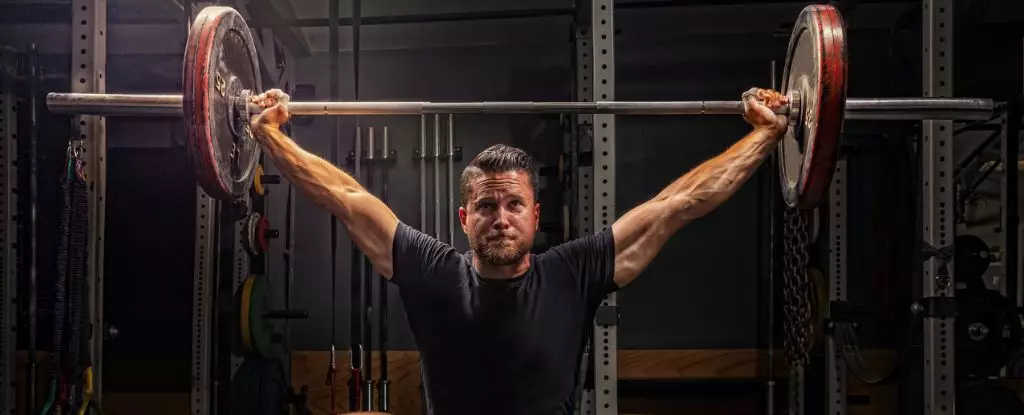As 2021 unfolded, the bodybuilding community was rocked by a shocking series of tragedies that gripped both enthusiasts and casual observers alike. The abrupt loss of over two dozen professional athletes within a single year raised myriad questions about the safety and sustainability of a sport often romanticized as a symbol of physical prowess and dedication. Among these fallen competitors, the stark fact that many were in their 20s and 30s—vital years assumed to boast health and vitality—emphasizes the urgent need for a critical examination of the practices and health standards that govern this grueling sport.
Remarkably, while many athletes traditionally enjoy a longer life span, bodybuilding seems plagued by an alarming trend. An extensive study from the University of Padova expanding over eight years examined the lives of more than 20,000 male bodybuilders, grappling with shocking findings. The study’s sheer magnitude accentuates the significant health risks that may be intertwined with elite competition—a raw reality that the industry largely overlooks in its pursuit of perfection.
The Alarming Statistics: A Wake-Up Call
The provocative data spoke volumes: a staggering 73 sudden deaths were recorded among this sample, with a mean age of 42. Heart failure emerged as the predominant cause, surfacing in 46 of these cases. Alarmingly, elite professionals faced a daunting risk—over 14 times higher for sudden heart failure compared to their amateur counterparts. This risks the very essence of what bodybuilding seeks to achieve: a celebration of human strength and vitality. Instead, the image of bodybuilding is increasingly marred by the specter of decline before one’s prime.
Perhaps even more distressing for the sport’s most elite competitors was the analysis of the Mr. Olympia ‘open’ category, a benchmark of excellence in bodybuilding. Of the 100 bodybuilders who graced this hallowed stage, seven died from sudden causes; five of these tragic losses were determined to be sudden cardiac deaths. This reality reframes our understanding of what it means to be among the world’s best. Instead of accolades, attention is now urgently needed on the medical implications and the dense fog of risk that engulfs such high-stakes environments.
Unveiling the Underlying Health Risks
Dr. Marco Vecchiato’s research illustrates a stark but overlooked narrative: the underlying cardiovascular health of high-level bodybuilders is often compromised. The extreme training regimens, dietary restrictions, and likely abuse of performance-enhancing substances add up to a toxic cocktail that ultimately takes a toll on the heart. Autopsies within the study corroborated these claims, revealing troubling findings of left ventricle thickening and enlarged hearts—this isn’t merely a byproduct of intensive physical exertion, but a signal that the body is paying an intolerable price.
The compelling argument for immediate reforms echoes loudly; how long can this sport continue to prioritize aesthetic extremes while ignoring the warning signs that professionals’ health is at stake? Consider that heart mass among bodybuilders has been noted to eclipse normal ranges dramatically—74 percent heavier than average in one study, with left ventricles 125 percent thicker. This stark contrast paints a disturbing picture: the very framework of what we idolize in bodybuilding may simultaneously serve as a grave risk to the lives we celebrate.
Time for Change: A Collective Responsibility
With these findings illuminating the urgent health crisis facing professional bodybuilders, the question arises: what should be done? The authors of the prominent study have implored for the establishment of urgent recommendations to curb the tragic pattern of loss that has become frighteningly familiar. Implementing simple yet life-saving measures such as automatic defibrillators at competitions could prove essential.
Yet this call for action addresses more than just immediate responses—it is a wake-up call for society as a whole. As we continue to romanticize physical transformation, it is imperative that we critically evaluate the lengths to which we push ourselves in the name of beauty and strength. Those who seek to uphold the spirit of competition and excellence must also champion the health of the individuals who embody these ideals. The balance between aspiration and caution is not merely a personal responsibility; it’s a collective one that needs urgent attention. Bodybuilding can still celebrate extraordinary achievement—it just must do so while placing health at the forefront.


Leave a Reply